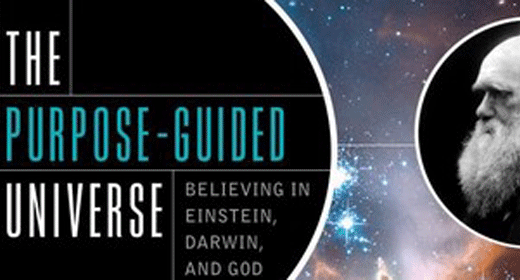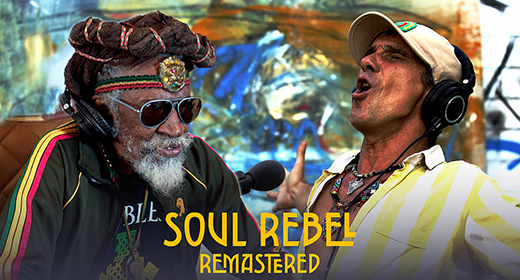The Yoga Sutras is one of the most important texts in Yoga and it addresses advanced practices and higher states of consciousness…

What are the Yoga Sutras of Patanjali?
The Yoga Sutras – also known as the Patanjali Sutras – is an ancient text written by the sage Patanjali. It is highly regarded and has been studied by yogis for centuries. Essentially it is a road map for the development of consciousness and it dives deeply into the psychological and spiritual aspects of the mind. A lot of it is about purifying the mind and removing afflictions and suffering in order to gain kaivalya (liberation).
Patanjali does not prescribe any rules or regulations. Instead he makes suggestions about how you can improve your meditation. Yoga is all about experience and the Yoga Sutras helps you to go deeper.
Why do we study them on the advanced teacher training courses rather from the beginning of teacher training?
In a way we do teach them from the first day of teacher training, though most people probably wouldn’t notice. Ashram Yoga’s approach to yoga is rooted in the Yoga Sutras and the development of the subtle body and its chakras. When you participate in one of our classes you are in some sense practising the Yoga Sutras.
As far as the text goes, there is a lot to digest on the Level 1 teacher training so we don’t teach the text until Level 2. By then students have an experiential foundation from a daily yoga practice and that makes it much easier to learn the Yoga Sutras.
What are Vrittis and Kleshas?
Vrittis are disturbances in the mind and they can include every thought or impulse. Kleshas are obstacles that are to be avoided. Sometimes they are called poisons. Patanjali lists five kleshas and says that they are real troublemakers. They are ignorance, egotism, likes, dislikes, and the fear of death.
Take for example likes and dislikes, which may also be called attraction and repulsion. They prevent you from having a balanced mind and they destroy your peace of mind. The Yoga Sutras encourages you to explore, question, and understand your own mind and psychology. Just by understanding the vrittis and kleshas you can have a clearer idea of how your mind works and what you can do to restore balance and harmony.
What are Abhyasa and Vairagya?
Abhyasa means constant practice and Patanjali says that the best results in Yoga come from constant, sincere practice over a long period of time.
Vairagya is often interpreted as detachment but that has the wrong connotation. It is more a matter of not minding what happens. Perhaps a lot of negative thoughts come up during meditation, vairagya is the practice of being okay with that and not reacting – just allowing it to happen.
Negative thoughts in meditation are sometimes compared to tigers walking past your front gate. You can sit on the porch and let them walk by or go out and wrestle with them. Vairagya is staying on the porch, uninvolved, just allowing them to pass by.
When you have developed this practice in meditation then it automatically spills over into your daily life. You will find it easier to step back from your internal dialogue and avoid inner and outer conflicts. Vairagya doesn’t make you cold or uncaring, instead it makes you present and that gives you a vastly greater capacity for love.
How is this applied?
Understanding and experience come together with techniques like Antar Mouna which is a mental technique that moves you towards inner silence. It trains you to be comfortable in that area of yourself and gives you the tools to manage what comes up. Then you become aware of the subconscious and unconscious areas of your mind. It is like shining a light into dark forgotten places. This is immensely purifying and removes many underlying afflictions, buried conflicts, and unconscious motivations. It frees up a lot of energy.
Antar Mouna is all about witnessing thoughts and seeing how they flow and the effect they have on you. It is a powerful technique for developing the habits of abhyasa and vairagya. It teaches you how to deal with both positive and negative thoughts. No doubt this can be very challenging and it takes a lot of regular practice so it is very helpful to study and practise in a group with the support of teachers and peers.
So it teaches us how to work with the Vrittis?
Yes, Antar Mouna trains you to deal with the monkey mind and that is helpful for everything you do. Perhaps you also meditate with a mantra or some other type of technique – when stuff comes up you will know what to do rather than being completely lost in distraction. It trains you to observe yourself and the more you can innocently observe the more you move into vairagya.
How does yoga help us make the jump from physical to spiritual?
Yoga removes the obstacles that obscure your spiritual nature. Patanjali says it is like a farmer who channels water to crops by removing barriers. Yoga purifies and integrates all aspects of your being. It consolidates what you already are. It is a return to your original, pristine nature rather than acquiring something new.
Yoga works on more than just the physical body. There are other dimensions to who you are and yoga illuminates them. These dimensions are called koshas and they are often referred to as bodies or sheaths. The most gross is your physical body made of flesh and bones. It is called annamaya kosha or the food body. Then more subtle is pranamaya kosha and it is your energy body made of prana. Next is the manomaya kosha and it is the lower mental body and your ordinary mind. After that is vijnanamaya kosha and it is the higher intuitive mind. Last is anandamaya kosha which is the bliss body and the causal body. Most of us are not aware of these – not even the third level, manomaya kosha, as this is the level of vritti or thought patterns.
All of yoga has to do with energy and mind.
When applying yoga on a mental level it has a strong effect on an emotional level. It is this emotional aspect that actually drives us. We get an idea in the mind which then creates an emotional response and that leads to action. People say that thoughts and feelings are separate but they actually arise together – they go hand in hand.
Yoga is a lot more than just asana or physical exercise. Even if you just practiced asana and nothing else, it would still have a big impact on the other koshas. This is why people who practice postures report that it improves their mind, emotions, and overall awareness. However, if you want to go past a certain point of knowledge and understanding then it is necessary to bring in other practices like pranayama breathing techniques and meditation which work more directly on the subtle aspects of your being.
These practices are an exploration in consciousness. They slowly refine your perception and make you much more aware of how your mind works, how other people’s minds work, and the inner workings of nature. The more subtle realms of the human being are more refined and with each step forward there is an increased sense of well-being. Over time this well-being becomes your permanent state of being, regardless of outer conditions like the health of your body or other situations in your life.
These practices open up different channels in the brain and activate silent, dormant areas. When this happens then you become more mature. You gain a higher level of understanding and wisdom and perception just as an adult has a greater capacity than a child, except this is on a spiritual level.
So through the practise of yoga techniques and learning more about observing oneself we are starting to recognise these other dimensions and potential more and more…
Yes. This is why having a teacher is so important. There are many distractions and doubts and questions that occur along the way and having a guide can make all the difference. Learning about these subtle aspects of yourself and growing spiritually is not just a matter of instruction because we also learn by example. Being around someone who is awake to these aspects can make your path a lot smoother. This is why satsang is emphasised in yoga.
How is Ashram Yoga’s approach to the Yoga Sutras different to other teacher training courses?
Ashram Yoga’s approach is old-school. The techniques we teach are not copyrighted or named after a particular guru or some modern way of doing things. What we teach is timeless, ownerless, ancient yoga. It is an experiential approach rooted in the application of practical techniques.
When you look at the world through the mind then you only see the surface of things. You see the physical object, you know the labels that describe it, and you feel some emotional fluctuations. That’s perfectly normal but there is a deeper and more juicy way of seeing the world – and that occurs when you see the energy behind things. Then the world really comes alive and your perception jumps from the ordinary to the extraordinary. Yoga helps you make that jump through the vehicle of meditation. That’s the gift of the Yoga Sutras and that’s what we teach.









































